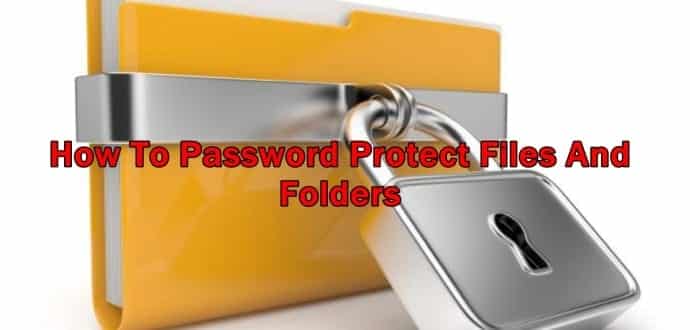Table Of Contents
These three encryption utilities will help you keep your private stuff private under protection of password
Encrypting files with a password is one of the easiest ways to secure personal information. While there are several apps have remarkably huge set of features, of which some not only handle file encryption but also text encryption or secure shredding.
In this article, we are going to show how you can smoothly encrypt files using Easy File Encryptor, Fort and VSFileEncrypt. Read below:
Easy File Encryptor
Easy File Encryptor uses the AES-256 algorithm and gets incorporated into the Windows Explorer context menu after installation. Right-click any file once the setup is over and click Encrypt (escorted by a yellow locker icon). In the first empty box, enter a Password and retype it for Confirmation in the second one, click Ok, and then click Ok again in the popup window that allows you to know the task was successful (Encrypted!). The original file is encrypted.
If somebody attempts to open the file without decrypting it first, they will get an error message that makes the item look damaged. Right-click the file in Explorer to decrypt it. Then select Decrypt and enter the Password in the popup window, click Ok, and then Ok in the Decrypted! popup window.
You can simultaneously encrypt and decrypt multiple files. Follow the same steps we formerly mentioned after choosing two or more files (while clicking them hold down Ctrl) or right-clicking a folder. Please note that only the files from that folder will be encrypted and decrypted, not the folder itself (this tool doesn’t support directory encryption).
Fort
Fort uses the AES-256 algorithm similar to Easy File Encryptor, and gets incorporated into the context menu of Windows Explorer. It can encrypt one or more files from a multiple selection or folder (not directory encryption). Right-click one or more files (to make a multiple selection hold down Ctrl), open the Fort menu (escorted by an icon with grey keys) and select Encrypt.
You can Enter passphrase used for encryption in the popup window, while keeping a watch on the Passphrase strength shown at the bottom. This lets you know how difficult it is for crackers to find out the key. To maximize security, click the + button next to the password box to create a random and safe password instantly, then the bird’s eye icon to view it unmasked.
However, you need to remember it to be able to decrypt the file. If you dread that your PC was taken over by keyloggers, click the keyboard button to call the Windows On-Screen Keyboard to type the password. Once you are done, click Encrypt.
By default, Fort creates a new encrypted file (with a locker icon) and leaves the original one untouched (it only modified its file name). You can also resort to file shredders, if you want to stop others from gaining access to the original data. To encrypt the original file directly in Fort, go to the Settings area after entering the passphrase and clear the Make a backup before encryption box. If you want to verify the password by retyping it, then you can also display another box below Enter passphrase. Go to the Interface tab of the Settings panel to do this and before encryption box check the Verify passphrase.
To decrypt one or more files, right-click them in Explorer, select Fort -> Decryption, Enter passphrase in the popup window, and click Decrypt. You can either safeguard each file with the same password (right-click menu -> Fort -> Encrypt All) or place all items in a password-protected ZIP archive (ZIP and Encrypt, it can be decrypted using Fort only) when you are encrypting files from a chosen folder.
VSFileEncrypt
VSFileEncrypt allows you to select from numerous security algorithms: AES-128, AES-192, AES-256, Salsa20-128, Salsa20-256, CAST-128 and CAST-256. During setup if you allow this, it gets incorporated into the Windows Explorer context menu.
Once it is installed, you can either launch its .exe file or right-click a file in Explorer and choose Send to VSFileEncrypt. The tool cannot actually process numerous files at the same time, even though this appears in the context menu even when right-clicking on more files. If you click Add file from the File menu and open a new file (or drop it in the window), it will substitute the one you are currently working on.
Under Algorithm, click the menu and select a security algorithm (one that’s not greyed out). Select AES-256, if you are not sure. Only the premium version of the tool will have the greyed-out options.
In the Output file area, click the file icon to set the output directory and name for creating the encrypted file (the original one is left untouched). Remember to add the original file name and .enc extension too.
On the toolbar, click Encrypt. Enter the Password and retype it to Confirm password in the Password to encrypt window, and click Ok to prepare the encryption process. Note to remember the security algorithm used (in this case, AES-256) and key to be able to decrypt the file.
Right-click in Explorer to decrypt a file, and choose Send to VSFileEncrypt. Then, click the File icon in the Output file area of the main window to identify where you want to reconstruct the original file (add its extension too), select the security algorithm that was applied in encryption, click Decrypt on the toolbar, enter the Password, and click Ok.

